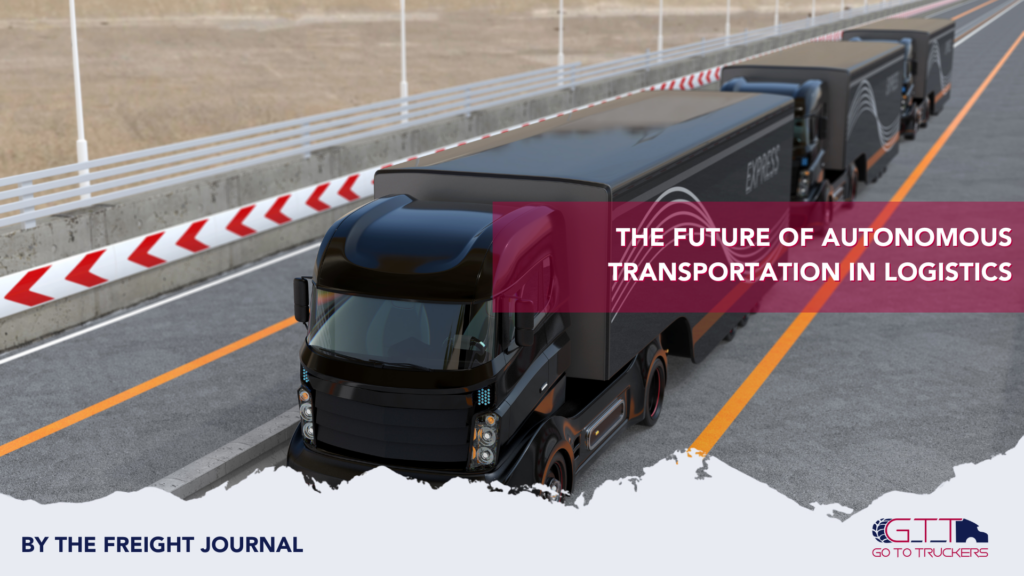
Autonomous transportation (AVs) can improve the shipping industry by reducing costs, increasing productivity, and improving safety. The fact that they can navigate a product from one location to another, avoiding road hazards and responding to traffic conditions, either partially or completely replacing the human driver is mindblowing.
Since AVs can operate 24/7, follow optimal routes, and automate loading and unloading processes, leading to increased efficiency, they are equipped with advanced sensors and AI algorithms that provide a 360-degree view, eliminating blind spots and reducing the risk of accidents, thus improving safety.
Consequently, AVs require fewer drivers, less maintenance, and optimized fuel efficiency, resulting in reduced costs. They can operate in close proximity and in restricted spaces, increasing capacity. AVs can be equipped with electric or hybrid powertrains, contributing to environmental sustainability.
However, challenges include regulatory frameworks, public acceptance, and cybersecurity concerns. Nonetheless, continued advancements in AI, sensor technology, and vehicle-to-vehicle communication are crucial for widespread AV adoption, as they have the potential to revolutionize goods transportation and delivery, leading to a more efficient, reliable, and environmentally friendly logistics ecosystem.

Here are a few pointers to take into account regarding AVs, considering the potential impact of autonomous vehicles on logistics quality and costs:
1. Efficiency and Reduced Costs:
Autonomous vehicles operate 24/7, eliminating the downtime associated with human drivers. Consequently, rest periods and breaks are eliminated and this increased operational efficiency leads to faster delivery times and improved asset utilization.
Autonomous vehicles can optimize routes and driving patterns, minimizing fuel consumption and reducing carbon emissions.
2. Safety and Reduced Accidents:
Autonomous vehicles equipped with advanced sensors and cameras can detect and respond to road hazards more effectively than human drivers. This means a significant decrease in accidents and associated costs.
3. Optimization of Last-Mile Delivery:
In dense urban areas, autonomous vehicles can navigate congested streets and narrow alleys more efficiently, reducing delivery time and improving customer satisfaction.
Additionally, autonomous drones can be utilized to deliver small packages in remote areas or inaccessible locations, expanding the reach of logistics operations.
4. Sustainability and Environmental Impact:
Autonomous vehicles can operate on electric or alternative fuel sources, thus reducing greenhouse gas emissions and promoting sustainable vehicle practices.

5. Scalability and Capacity Expansion:
Autonomous vehicles can easily scale up or down to meet fluctuating demand. Similarly, they can provide flexibility and adaptability in logistics operations.
6. Improved Data and Analytics:
Autonomous vehicles generate a wealth of real-time data, which can be analyzed to optimize routes, predict demand, and improve decision-making. This results in an ever-optimizable system.

7. Integration with Supply Chain Management:
Autonomous vehicles can seamlessly integrate with supply chain management systems. Additionally, they provide end-to-end visibility and control over the transportation process.
8. Collaboration and Partnerships:
Logistics companies may collaborate with technology providers, automakers, and infrastructure developers. Thus, creating a comprehensive autonomous vehicle ecosystem.
9. Legislation and Regulation:
Governments and regulatory bodies will play a crucial role in establishing legal frameworks and safety standards for autonomous vehicles in logistics.

10. Workforce Impact and Upskilling:
The adoption of autonomous vehicles will require upskilling and training of logistics professionals to adapt to the new technologies.
11. Cybersecurity and Data Security:
Autonomous vehicles generate and transmit sensitive data. In consequence, they will necessitate robust cybersecurity measures to protect against potential threats.

12. Customer Experience and Enhanced Service:
Autonomous vehicles can offer customized delivery options, such as time slot selection and real-time tracking, enhancing customer experience.
13. Cost-Benefit Analysis:
While autonomous vehicles may entail higher upfront costs, long-term cost savings from reduced labor expenses, fuel efficiency, and accident prevention can offset the initial investment.
14. Pilot Programs and Early Adopters:
Many logistics companies have already initiated pilot programs with autonomous vehicles, testing and evaluating their performance in real-world scenarios.
15. Public Perception and Acceptance:
Building public trust and acceptance of autonomous vehicles in logistics will be crucial for their widespread adoption.
The potential to revolutionize the shipping industry by reducing costs, increasing productivity, and improving safety is at our fingertips. However, challenges such as regulatory frameworks, public acceptance, and cybersecurity concerns need to be addressed. Continued advancements in AI, sensor technology, and vehicle-to-vehicle communication are crucial for widespread AV adoption.
It’s just a matter of (very little) time.
Hey! This is my 1st comment here so I just wanted to give a quick shout out and tell you
I genuinely enjoy reading through your posts. Can you
suggest any other blogs/websites/forums that deal with the same topics?
Thank you so much!
Also visit my web page asporlogistic.com.ua
Thank you for your comments. I recommend https://www.freightwaves.com/